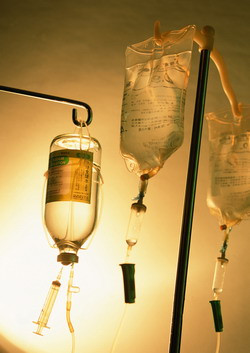The largest clinical trial ever conducted exclusively in New Zealand intensive care units has not found any safety concerns with using saline as fluid therapy for intensive care patients.
The clinical trial, involving more than 2200 patients from intensive care units (ICUs) in Auckland, Wellington, and Christchurch, was funded by the HRC’s Research Partnerships for New Zealand Health Delivery initiative and has just been published in the prestigious Journal of the American Medical Association.
Lead researcher and intensive care specialist Dr Paul Young says the study was designed by frontline ICU doctors in response to recent data suggesting that saline solutions, which have been used in clinical medicine since the cholera epidemics of the 1830s, may increase the risk of patients developing kidney failure.
There was also a lack of data from clinical trials to demonstrate the safety of newer alternative fluids with lower chloride concentrations such as Plasma Lyte®.
“Our study compared saline with Plasma Lyte® and showed that the two fluids have similar outcomes. In particular, we have found that using saline did not increase the risk of developing kidney failure compared with using Plasma Lyte®,” says Dr Young.
“The results are of major significance for global public health because they provide reassurance about the safety of intravenous saline, which is currently administered to more than a million patients around the world every day.”
The study also found that the mortality rate of the patients in the trial while they were in hospital was much lower than that typically observed in ICUs in other parts of the world. Dr Young puts this partly down to the strong commitment in New Zealand ICUs to improving patient outcomes through research.
“If patients get sick enough to need intensive care, New Zealand is one of the best countries in the world to be; their chances of surviving here are better than almost anywhere else in the world,” says Dr Young.
As more than a million litres of fluid are given to patients around the world every day – and saline is cheaper than the newer fluids by between 50 cents and $8, depending on the country – this study has the potential to lead to health care savings of millions of dollars every day on a global scale.
HRC Chief Executive Professor Kath McPherson says the $200,000 given to fund this study represents an excellent return on investment.
“The findings from this study are currently the best evidence that exists in this field and will likely have major implications for health care delivery and the management of ICU patients in New Zealand and around the world,” says Professor McPherson.
Dr Young and his team are now working on a trial to find out whether saline or Plasma Lyte® leads to a lower risk of death in the sickest ICU patients.
